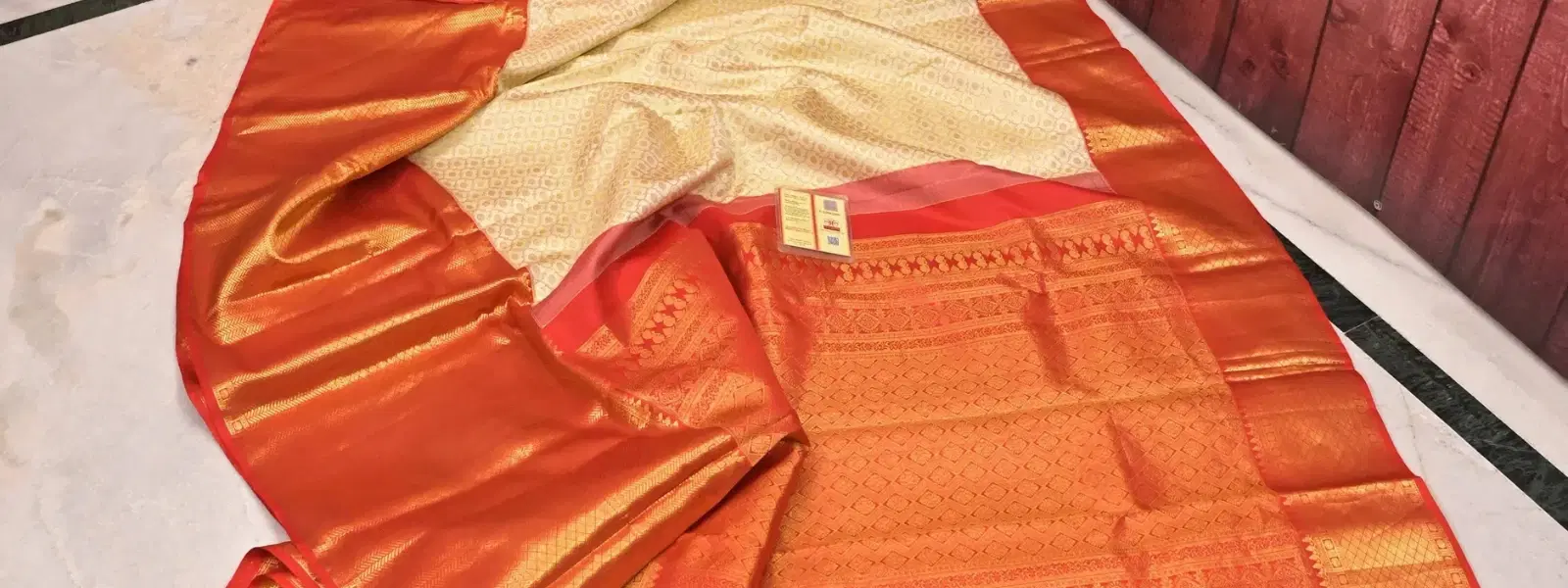
Apparel & Accessories
•03 min read
-b4b0ee01-7102-4782-b4cc-72450eaeb58c.png&w=3840&q=75)
Handloom sarees are a timeless treasure. These sarees are woven by skilled artisans and hold cultural and historical importance. In this guide, you will learn what is handloom saree and how to identify authentic ones like a pro. We will explore their unique benefits, the art of handloom weaving, and share tips on styling and care. By the end, you will feel confident in spotting genuine handloom sarees and celebrating their distinct charm.
A handloom saree is a saree woven on a traditional loom by skilled craftsmen. The process is completely manual, which means each saree is unique. Unlike powerloom sarees, handloom sarees are made with care and show the artist’s passion. They capture a part of India's rich cultural heritage.
There are clear differences. With handloom sarees, you can see small variations in the weave, texture, and pattern. These sarees often feel softer and have a natural touch compared to machine-made powerloom sarees. The manual work involved makes them more valuable and cherished.
The weaving process uses traditional looms and old techniques that pass from one generation to the next. Regional styles add charm with unique designs and motifs. This approach makes each handloom saree special and a piece of art.
India has a rich diversity of traditional handloom sarees. Many regions have their own style. Popular types include Banarasi, Kanchipuram, Chanderi, Sambalpuri, Pochampalli, and Jamdani sarees. Each type reflects local culture and history with its own set of rules for handloom saree weaving and design.
Cotton handloom sarees are best for a casual day out. They are light and breathe well, making them ideal for warm days. Silk handloom sarees hold a luxurious sheen and are often worn on special occasions. Each material offers a unique look and feel, catering to different style preferences.
-961388ae-2e6f-4656-ab76-3780ab6a42c4.png&w=3840&q=75)
When picking a handloom saree, here are some helpful hints. Look for small irregularities in the weave; this is a sign of handmade craftsmanship. Genuine sarees may also have a handloom mark or certification. The texture of the fabric usually feels natural and soft when touched.
Handloom saree designs are known for their intricacy. These sarees often feature traditional motifs and regional patterns. Being careful and examining these details can help you determine if the saree is authentic.
Did You Know? Handloom sarees are crafted from natural fibers like cotton and silk. You can check authenticity by performing a small burn test on loose threads. Natural fibers will turn to ash, while synthetic fibers melt and emit a chemical smell. Always consult an expert before trying this method.
The handloom saree benefits go beyond fashion. They promote sustainability and are eco-friendly. These sarees support local artisans and help preserve a rich cultural heritage. When you choose a handloom saree, you are buying a piece of art with a story.
Natural fabrics in handloom sarees are breathable and gentle on the skin. They are a good choice for comfort and health, especially in warm climates.
Style is all about self-expression. You can pair handloom sarees with elegant blouses that bring out the rich patterns. Mix and match accessories to enhance the look without overpowering the dress. These sarees are versatile enough to be worn at festive occasions and casual outings alike.
-68be3552-55c1-4572-9cbe-6f32de66a775.png&w=3840&q=75)
Taking care of your saree will keep it in pristine condition. Follow this handloom saree care guide for the best results:
Handwash with mild detergents to protect the fabric.
Store in a cool, dry place away from direct sunlight.
For silk sarees, avoid prolonged exposure to the sun to preserve the sheen.
Handloom sarees are woven manually on traditional looms, leading to unique textures and patterns. Powerloom sarees are machine-made and often lack this artisanal touch.
They require a time-intensive manual weaving process and high-quality natural fibers, which make them more valuable.
Look for slight irregularities in the weave, a handloom certification mark, and the natural texture of the fabric.
Popular types include Banarasi, Kanchipuram, Chanderi, Sambalpuri, Pochampalli, and Jamdani sarees, each with unique patterns and regional weaving techniques.
Handwash with a mild detergent, store in a cool, dry place, and keep silk sarees away from direct sunlight.
Handloom sarees are more than just garments—they are a celebration of India’s cultural heritage and artisanal skill. By understanding the unique process of handloom saree weaving and using careful inspection methods, you can easily identify authentic pieces. Embrace the elegance and sustainability of these timeless creations as a way to express your individuality. Explore the diverse options available and enjoy the stylish journey that these traditional sarees offer.